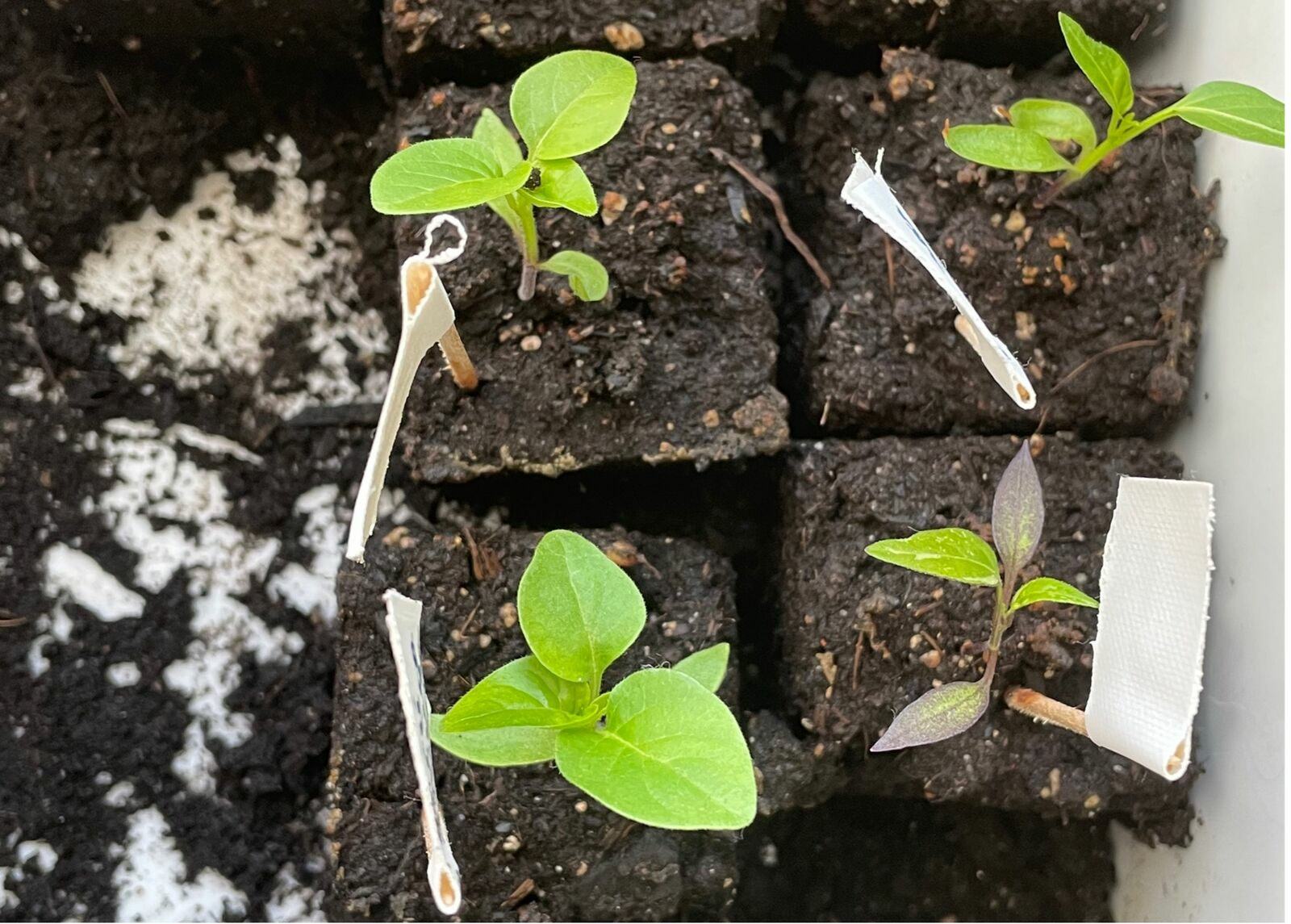
Propagating Peppers/Chillies: How to Grow Them Successfully
Bell pepper and chili plants are often grown in advance, as they take longer to germinate and grow than other crops. Due to the long growing time, you should therefore start growing peppers and chilies early. That way you can harvest lots of fruit later. Here is an overview of what you need to bear in mind when growing peppers and chillies.
This Article Contains:
Quick Overview
Sowing Peppers/Chili: The Most Important Factors
- Time: between mid-January and mid-March
- Soil: Use nutrient-poor, peat-free, sterilized potting soil
- Pot size: Sow in pots with a diameter of around 7 - 10 cm/2.8 - 3.9 in
- Sowing depth: for most varieties between 0.2 - 1 cm/0.08 - 0.4 in deep
- Location: sunny and warm place (approx. 25 ° C/77 ° F)
- Germination time: usually between 2 - 3 weeks
Propagating Peppers/Chilies - The Most Common Mistakes
- Too much humidity and too little ventilation lead to mold growth
- Temperature not constant or too low
- If there is too little light and the temperature is too high, your plants will go to seed
- Incorrect sowing depth - follow the instructions on the seed packet
- Too little space for the seedlings - prick out in good time
- Seeds are too old and can no longer germinate
Grow Your Own Peppers & Chili
Peppers and chilies are slow-growing, heat-loving crops. You should pre-cultivate them, as they can only be planted outdoors from mid-May. If you only sow them as seeds outdoors in May, they will probably not bear fruit before fall arrives and the temperatures become too cold. In addition, young plants are already better protected against pests such as snails and are less susceptible to diseases. Below, we show you how to successfully pre-cultivate peppers and chilies. For more Tips on Planting and Caring for Peppers and Chilies, see our article.
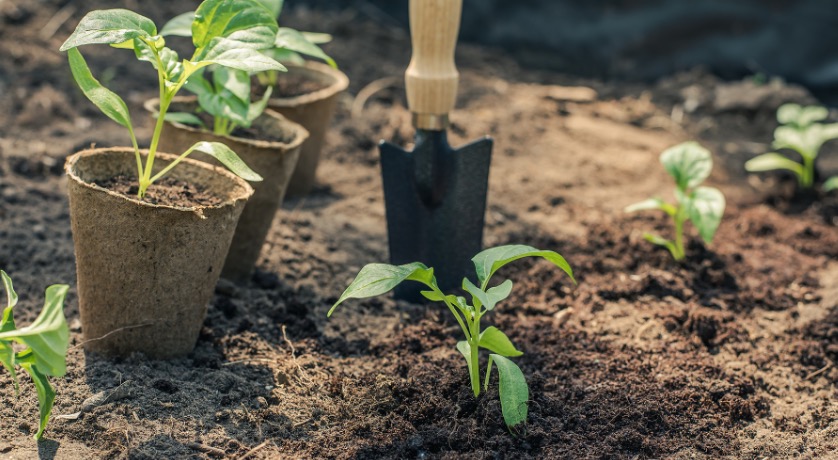
Growing Peppers & Chili Peppers: Everything You Need to Know
Every vegetable plant has its own optimal conditions for its development. You should therefore consider a few factors when growing peppers/chillies. This will promote healthy and vigorous growth:
- Use low-nutrient, peat-free and sterilized potting compost. (You can find out more about potting compost and how to make it yourself in our article Making Your Own Potting Compost). This allows your plants to develop strong roots and prevents them from being supplied with too many nutrients.
- You should use small pots with a diameter of around 7 - 10 cm/2.8 - 3.9 in for growing peppers and chilies. Sow the seeds every 2 - 3 cm/0.8 - 1.2 in in the sowing soil. Once your seedlings are about 10 cm/3.9 in tall, you should prick them out into larger pots.
Sowing Peppers & Chili: The Best Time
Peppers and chili peppers are one of the first crops that can be grown after the start of the new year. As they take a long time to germinate, the first varieties are grown from the end of January (or if your plants are allowed into the greenhouse early). However, cultivation is usually started between mid-February and early/mid-March. When exactly you should start propagating depends on this:
- which variety it is
- whether you have a greenhouse
- the climate in your region
As the days, and therefore the hours of sunshine, are still short in February and March, you should also get Plant Lamps if necessary. This is particularly important if your rooms are dark and the windows are small and not south-facing. If they are grown too early, at too high a temperature but with too little light, your seedlings will go to seed (due to too little light but too much heat, they will remain thin and weak but grow quickly).
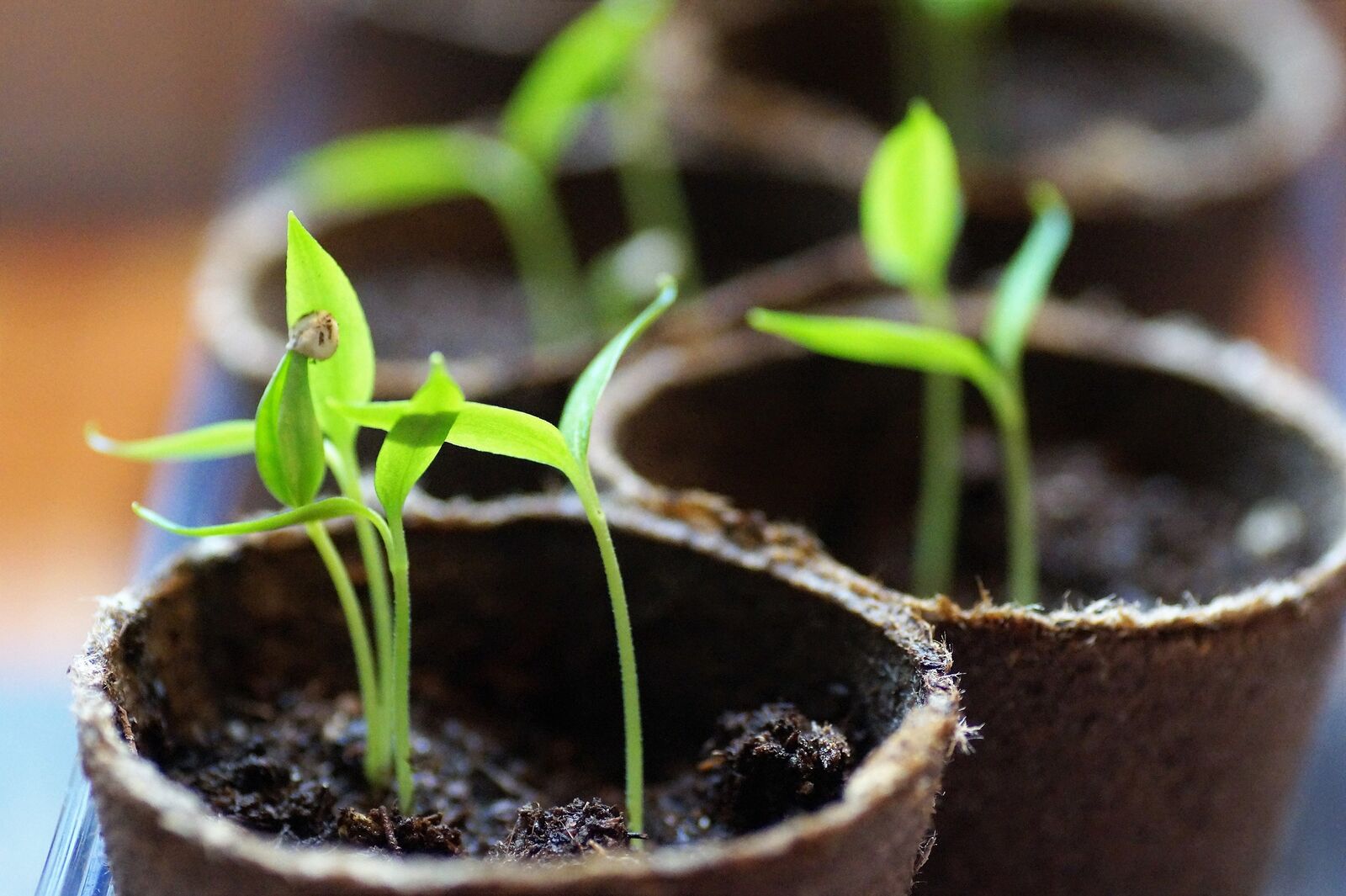
Light Germinator or Dark Germinator: The Right Sowing Depth
With peppers and chilies, it is not so easy to differentiate between light and dark sprouts. Most bell pepper and chili varieties are dark germinators and should be covered with a little soil. However, there are also a few varieties that are light germinators and should therefore be covered with little or no soil. Normally, however, the sowing depth for peppers and chilies is between 0.2 and 1 cm/0.08 and 0.4 in. As a rule of thumb, the sowing depth should be about three times the size of the seed. It is best to pay attention to the information on your seed packets.

Learn More About Sowing Times for Vegetables
In our library you will find information on the individual varieties with cultivation periods, tips on planting and harvesting. You will also find good and bad companion plants to help you plan a mixed crop.
View Library NowGermination Period and Germination Temperature
Peppers and chilies are thermophilic plants. The temperature for germination should therefore be at least 20 ° C/68 ° F, but ideally 25 ° C/77 ° F. In general, the lower the temperature, the longer the bell pepper and chili seeds will take to germinate. In some cases, this can take up to 4 weeks, but it is usually between 2-3 weeks. Germination rarely occurs after just 10 days. Once your seeds have germinated, however, you should keep the seedlings a little cooler. The temperature should be around 18 ° C/64 ° F.
Pepper & Chilli Seeds Don’t Germinate: What to Do?
If your bell pepper or chili seeds do not germinate, this may be due to several factors. The most common reasons include too low a temperature, too much or too little moisture, poor germination or incorrect sowing depth. Below we explain some of the factors that influence the likelihood of germination.
The Right Location?
It is important to maintain the right conditions and choose the right place for your plants. Peppers and chilies need plenty of sunlight to develop. The ideal location for the plants is therefore in a large south-facing window or in a greenhouse. If you don't have a suitable location with sufficient light, plant lamps can be helpful. Also make sure that the plants have enough space to grow and that they are watered regularly.
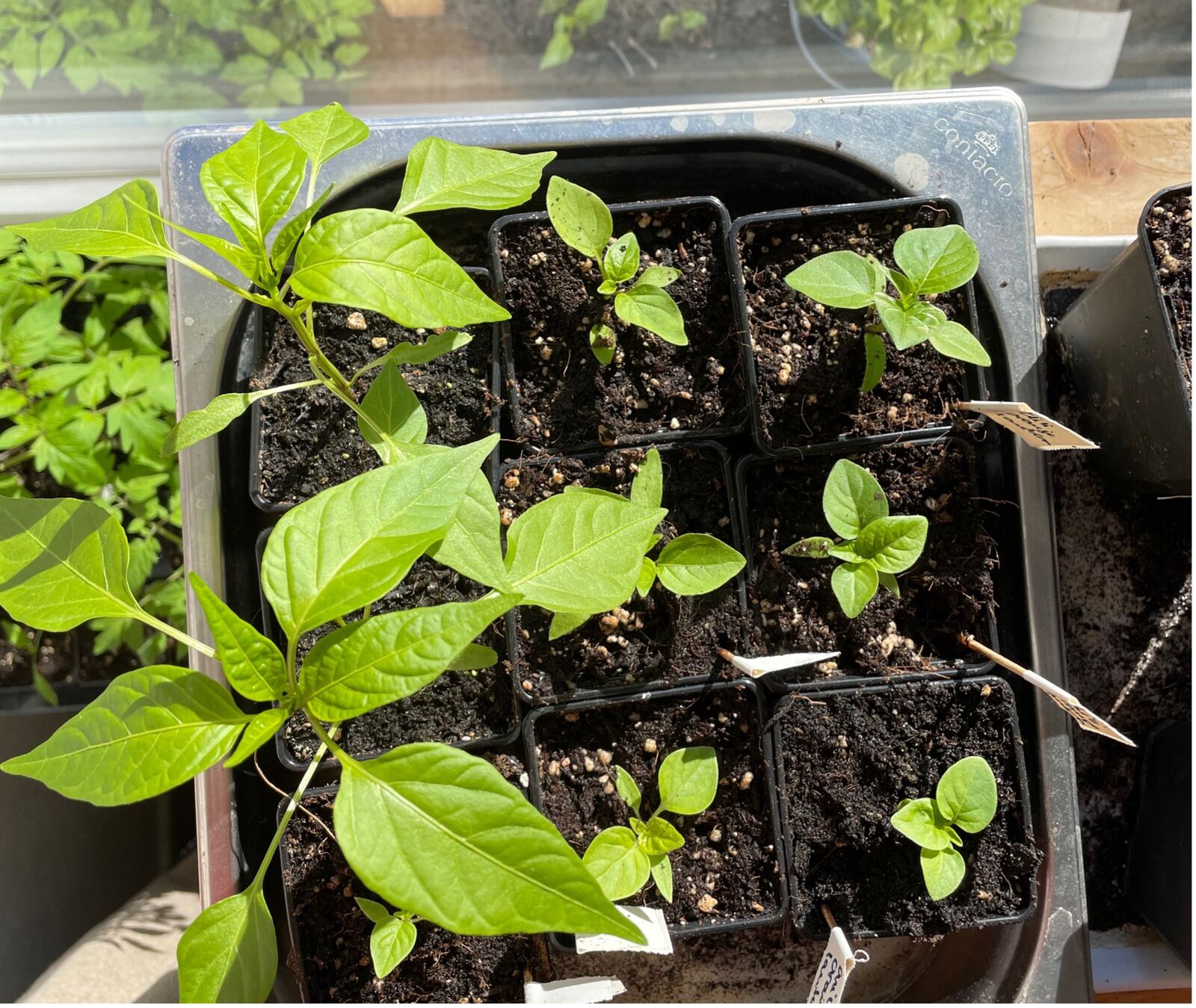
Soak and Pre-germinate Paprika & Chili Seeds
As peppers and chilies take a long time to germinate and grow, it may be worth soaking and pre-germinating bell pepper and chili seeds before sowing. This can be done overnight (12 - 24 hours ) in cooled chamomile tea, lukewarm water or on a damp cloth. In our article on growing vegetable plants, you will find instructions on How to Pre-soak Seeds. By pre-germinating bell pepper and chili seeds, you give your vegetable plants a head start for growth as you shorten the germination time.
Peppers & Chili Moldy - What You Should Do
A high level of humidity is important during cultivation so that the seeds germinate well. Indoor greenhouses are often used for this purpose. Unfortunately, this can sometimes lead to your growing soil or pots becoming moldy if there is too little ventilation. You should therefore remove the cover of the mini-greenhouse for 10 minutes every day and stop watering until the soil is almost dry if mold appears . Horsetail decoction can also help to combat mold. You can find more detailed information in our article on growing pots & aids for successful cultivation under Growing Pots Go Moldy - What to Do? Also make sure that excess water can drain away easily. If your pots and plants are standing in water, this also promotes mold growth.
Peppers/Chilli Peppers Prick & Repot
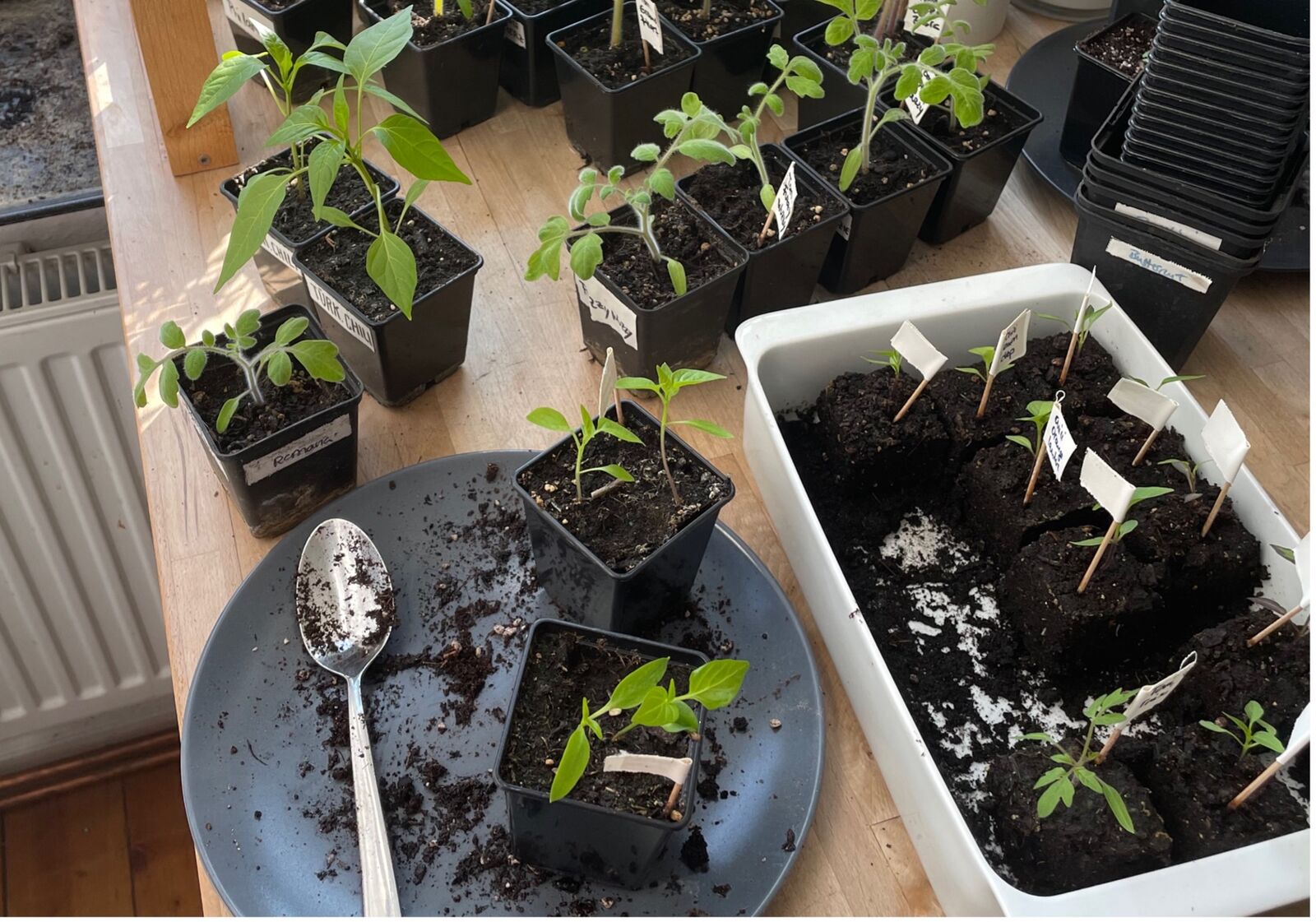
Due to the long growing time of peppers and chilies, it may be advisable to prick out and repot the young plants before planting out, depending on the pot size selected. You can find more information on How to Prick Out and Repot Peppers and Chilies in our article Pricking out vegetable plants.
If you have any questions or comments, please write to us at magazin@fryd.app. Would you like to receive helpful gardening tips all year round and plan your own beds optimally? Then register here or download the Fryd app for Android or iOS.
Fryd - your digital bed planner
Marielena
Current Topics in the Community

#red , #tuesday

Liked 1 times
#testpostcount

Dec 2025
Popular Articles

Companion Plants for Carrots: What (Not) to Plant With Carrots

Companion Plants for Celery : What (Not) to Plant With Celery?

Strawberry Types: List of Best Strawberry Varieties

Companion Planting With Strawberries: Companion Plants and Planting Plan

Basil Varieties & Types at a Glance

What to Plant With Cabbage: Good and Bad Companion Plants

Fertilizing Strawberries: Home Remedies & Natural Fertilizers at a Glance

Growing Sweet Potatoes: Tips on Cultivation & Companion Plants

Companion Plants for Kitchen Herbs: Chives, Parsley & Co

What Herbs Can Be Planted Together?
FAQ
When should peppers and chili be propagated?
Peppers and chilies should be pre-grown between mid-January and mid-March. You can then plant out your young plants in May after the Ice Saints and benefit from an extended harvest period.
How long do you have to soak paprika and chili seeds?
It is not necessary to soak paprika and chili seeds. However, if you want to do this, you should soak them in lukewarm water or chamomile tea for 12-24 hours.
What soil should I use to grow peppers and chili peppers?
You should use low-nutrient, peat-free and sterilized potting compost when growing vegetable plants. This will allow your plants to develop strong roots and not be supplied with too many nutrients straight away.
Most bell pepper and chili varieties are dark germinators. However, there are also a few varieties that are light germinators and should therefore be covered with little or no soil. The sowing depth for peppers and chilies is normally between 0.2 - 1 cm/0.08 - 0.2 in. As a rule of thumb, the sowing depth should be approx. 3 times the size of the seed.
What pot size should I use for growing peppers and chili peppers?
We recommend using small pots with a diameter of around 7-10 cm/2.8 - 3.9 in for growing peppers and chilies. The seeds should be sown every 2-3 cm/0.4 - 1.2 in in the sowing soil.